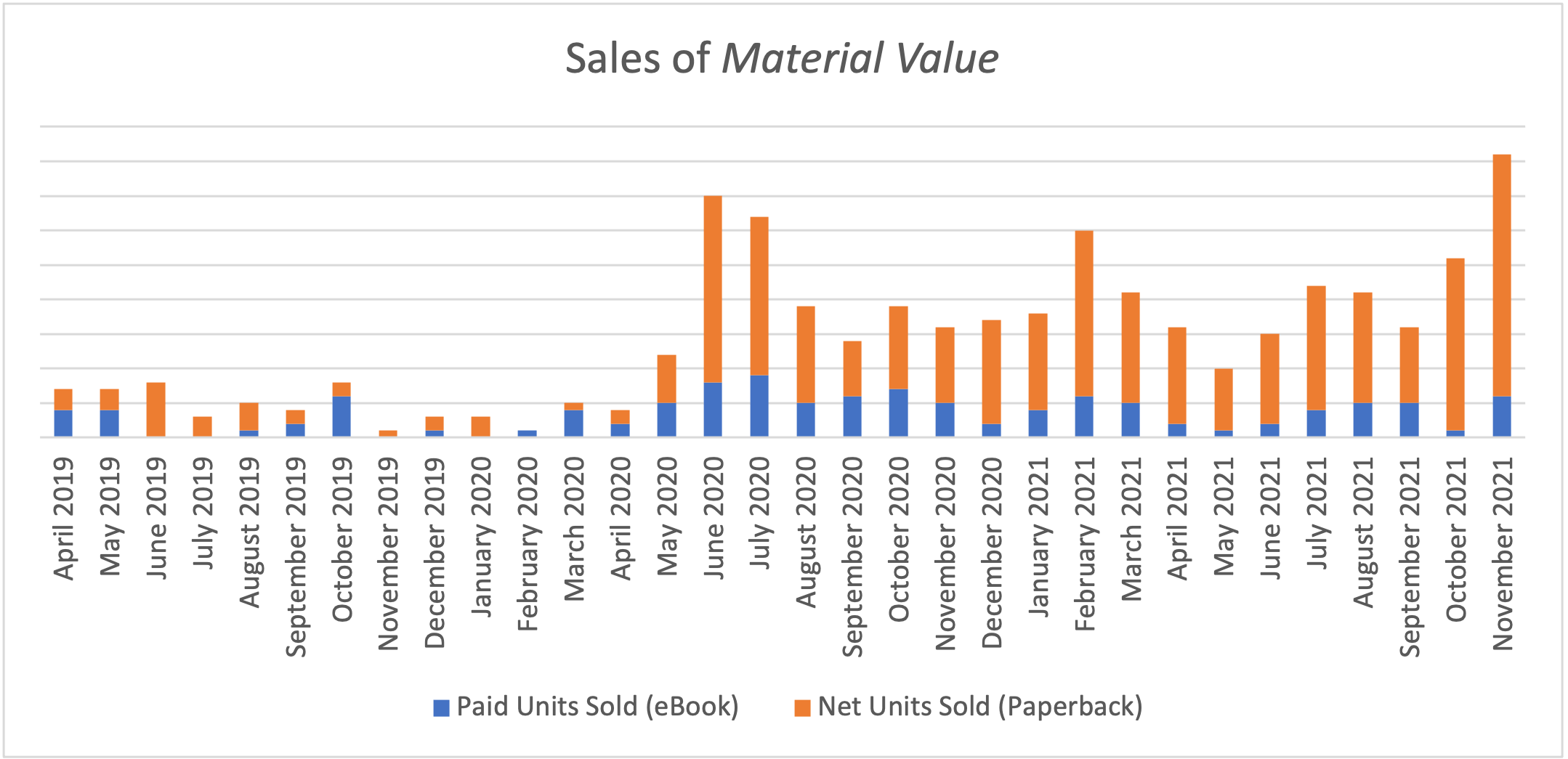We are in year three of a global pandemic that has changed our perspective on health, the economy, and inequality. Attitudes toward environmental sustainability have also shifted in the past two years. We experienced cleaner air resulting from just a few months of shutdowns in manufacturing and transportation, followed by an uptick in greenhouse gas (GHG) emissions and pollution as operations resumed. Manufacturers in all industries, including semiconductors, now realize that environmental sustainability needs to be a key pillar of their operations.
I’ve experienced the growing interest in sustainable manufacturing through increased sales of my book Material Value: More Sustainable, Less Wasteful Manufacturing of Everything From Cell Phones to Cleaning Products. The book came out in April 2019 (Figure 1).

Companies want to know how their efforts measure up and how they can accelerate their environmental initiatives as they tackle ambitious 2030 goals. In the journey toward net-zero carbon emissions, how fast is fast enough? The simple answer is that while you should celebrate progress, there is always more you can and should do.
Here is one three-step process to determine your sustainability report card. First, consider how you are talking about sustainability inside your walls. Second, look at what you are saying to customers, suppliers, and investors. Finally, take an honest assessment of whether your actions match your words.
What story are you telling yourself?
Honest, transparent internal communication is essential to an effective sustainability strategy. Your company might be making great strides in reducing GHG emissions or sourcing from responsible suppliers. Or you might be lagging in these and other areas. Do your employees know where you stand?
It is important to explain your sustainability goals to all employees and regularly share progress. When employees in all departments and all locations are aware of the company’s efforts, they can be part of the solution. Open communication leads to better collaboration. For example, electrical engineers can work with materials scientists to design chips that consume less power. Technicians may spot inefficiencies in energy or water use. If they share their observations, they can work with management to improve the system.
To make sustainability a top priority, there must be alignment from the top down that extends throughout the company’s operations. Industry leaders foster a corporate culture where sustainability is everyone’s responsibility. Employees are encouraged to speak up if they see deficits or opportunities for improvement. Is that the case at your company?
When measuring GHG emissions, Scope 1 covers emissions from the company’s operations. You need to get your own house in order before broadening your horizons to your industry or your supply chain. Similarly, your sustainability report card starts with honest communication inside your walls. But it doesn’t end there.
What story are you telling the world?
Prospective customers want to know what products you offer and whether your specs meet their needs. But they are also likely to ask how you stand on sustainability. When they visit your company website, can they easily find the information they seek?
Your website content and the way you organize it can indicate that sustainability is a high priority. On the flip side, the lack of sustainability-related content sends the message that the company does not consider the environmental impact of its products.
When the committee was evaluating companies for the 3D InCites 2021 Sustainability Award, we examined corporate websites. We especially kept an eye out for:
- A statement on the home page about the company’s values that includes a position on the environment
- A list of recent awards and certifications
- Blog posts highlighting progress toward sustainability goals
- An easy-to-find link to a sustainability or ESG page for more detailed information
- A link to download a current sustainability report prepared according to GRI Standards
Sustainability reporting is on the rise. In 2020, 90% of the companies in the S&P 500 index published sustainability reports. Reporting is not as common for smaller companies, especially those that are privately held, but the same trend prevails.
Reports present an opportunity to show the world your goals and progress toward them. Most reports address environmental, social, and governance (ESG) issues. But reports vary quite a bit in scope, format, and level of detail. You can compare your reports to those of your competitors, customers, or suppliers as a reality check.
Do your actions match your words?
Communication is important, but words and actions must match. A company culture that claims to care about people and the planet is of no use unless there is a real commitment behind it. A beautiful sustainability page on your website does not ring true if you are proceeding with business as usual regardless of the harm you might be causing.
The United Nations Sustainable Development Goals offer a great framework for progress. But merely posting them on a wall is not enough. It is helpful to choose a few of the goals where your company can have the greatest impact. Then take a close look at your current performance and find ways to make continuous improvement.
These are the UN SDGs we considered when evaluating companies for the 3D InCites Sustainability Award:
- 6—Clean water and sanitation
- 7—Affordable and Clean Energy
- 12—Responsible Consumption and Production
- 13—Climate Action
These are all relevant to semiconductor manufacturing. Blog posts in the 3D InCites Sustainability 101 series have covered all of them with posts on GHG emissions, the circular economy, chemicals of concern, and water management.
Are you taking steps to increase your positive impact and decrease your negative impact related to these SDGs? It is important to consider all aspects of your business operations around the world. It is not enough to improve one product line or factory location. That’s a great start, but high-ranking companies make global changes that affect their entire company. Then they go a step further to put pressure on their peers and suppliers.
The book Net Positive: How Courageous Companies Thrive by Giving More Than They Take by Paul Polman and Andrew Winston is a great resource for business leaders who want their companies to do more. The website dedicated to the Net Positive movement features a readiness test. This tool can help you assess your current status and point to areas where you can improve.
Your company has likely taken at least the first step toward sustainability: awareness. I hope that you will develop ever more ambitious sustainability goals and work with your colleagues, industry peers, and suppliers to get high marks on your sustainability report card.
This article first appeared in the 2022 3D InCites Yearbook. You can read the full issue here.



















